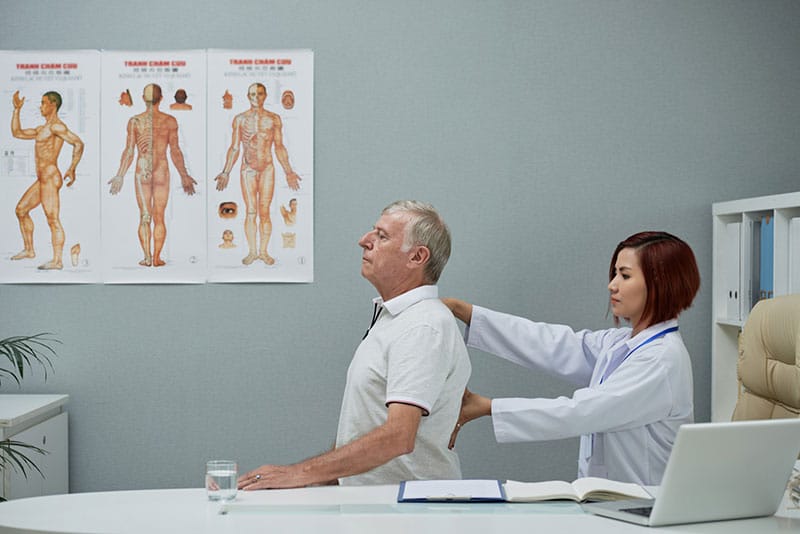Chiropractors should understand the major chiropractic documentation requirements for Medicare as Medicare Part B covers chiropractic care under very limited circumstances such as: the treatment must be medically necessary while formally prescribed by a physician and the care must be provided by a Medicare-certified chiropractor. Coverage is given only to chiropractic treatment that involves the manipulation of the spine in order to correct a subluxation (a bone that is out of position in the spine). Though Medicare Part C Medicare Advantage managed care plan may cover slightly broader chiropractic treatment than Part B, a chiropractic service provided would be reimbursable through Medicare only if the documentation shows clinical necessity for that service. According to the American Chiropractic Association, the documentation for Medicare must include details of subluxation, initial and subsequent visits.
Requirements for Subluxation Documentation
There are two methods by which subluxation may be documented, such as X-ray and physical examination. If an X-ray is used for documentation, it must have been taken at a time that is reasonably proximate to the initiation of a course of treatment. An X-ray is regarded reasonably proximate if it was taken not more than 12 months before or three months following the initiation of the course of treatment unless more specific X-ray evidence is warranted. If physical examination is used, it must be documented as per the P.A.R.T system which includes four components such as:
P: PAIN AND TENDERNESS
This must be documented in terms of the location, quality, and intensity. It can be identified using one or more of the following:
- Noting personal observation of pain that the patient exhibits during examination
- Noting percussion, palpation, or provocation (if pain is reproduced while examining)
- Asking patients to grade pain on a visual analog type scale from 0-10
- Asking patients to verbally grade their pain from 0-10
- Using pain questionnaires
A: ASYMMETRY/MISALIGNMENT
This may be identified on a sectional or segmental level by using one or more of the following:
- Observing patient posture or gait analysis
- Static and dynamic palpation
- Diagnostic imaging (X-ray, CAT scan and MRI)
R: RANGE OF MOTION ABNORMALITY
This means documenting an increase or decrease in sectional or segmental mobility due to the changes in active, passive and accessory joint movements. It can be identified using one or more of the following:
- Observing an increase or decrease in the patient’s range of motion
- Noting motion palpation findings
- Stress Diagnostic Imaging
- Using motion measuring devices such as goniometers or inclinometers
T: TISSUE, TONE CHANGES
This represents alterations in the characteristics of contiguous and associated soft tissues such as skin, fascia, muscle, and ligament. It can be identified using one or more of the following.
- Observing visible changes including signs of spasm, inflammation, swelling, and rigidity
- Palpating tissues such as hypertonicity, hypotonicity, spasm, inflammation, tautness, rigidity, and flaccidity
- Using instruments
- Tests for length and strength
The instrument used and the finding should be documented well. In addition to this, leg length, scoliosis contracture, and strength of muscles must be documented.
According to the Centers for Medicare & Medicaid Services (CMS), at least two of these four components must be documented for Medicare reimbursement with at least one of A and R. As the carrier may request patient records at times, it is important to keep standardized patient chart notes.
Requirements for Initial Visit
- While documenting for initial visit, make sure the following details are included:
- History of the patient’s condition along with a detailed description of the present condition
- Physical evaluation of musculoskeletal/nervous system
- Diagnosis
- Treatment Plan
- Date of initial treatment
The treatment plan should include recommended level of care (duration and frequency of visits), specific treatment goals and objective measures to evaluate the effectiveness of the treatment.
Requirements for Subsequent Visits
- History with review of chief complaint, improvement or regression since last visit and system review (if relevant)
- Physical examination that include the exam of the spine that is involved in diagnosis, assessment of change in the patient’s condition since last visit and the evaluation of the effectiveness of the treatment
- Details of treatment given on the day of visit
- Changes to the treatment plan, if any
Even if you know about the documentation requirements, it is very important to use the common sense approach to Medicare documentation. This is because what seems to be appropriate for documenting one visit may not be sufficient for another while considering other factors such as frequency, duration of condition, severity of condition, and past history among others. If documentation becomes time-consuming for chiropractors and affect their productivity, they can always seek the support of professional transcriptionists to save time and effort.
